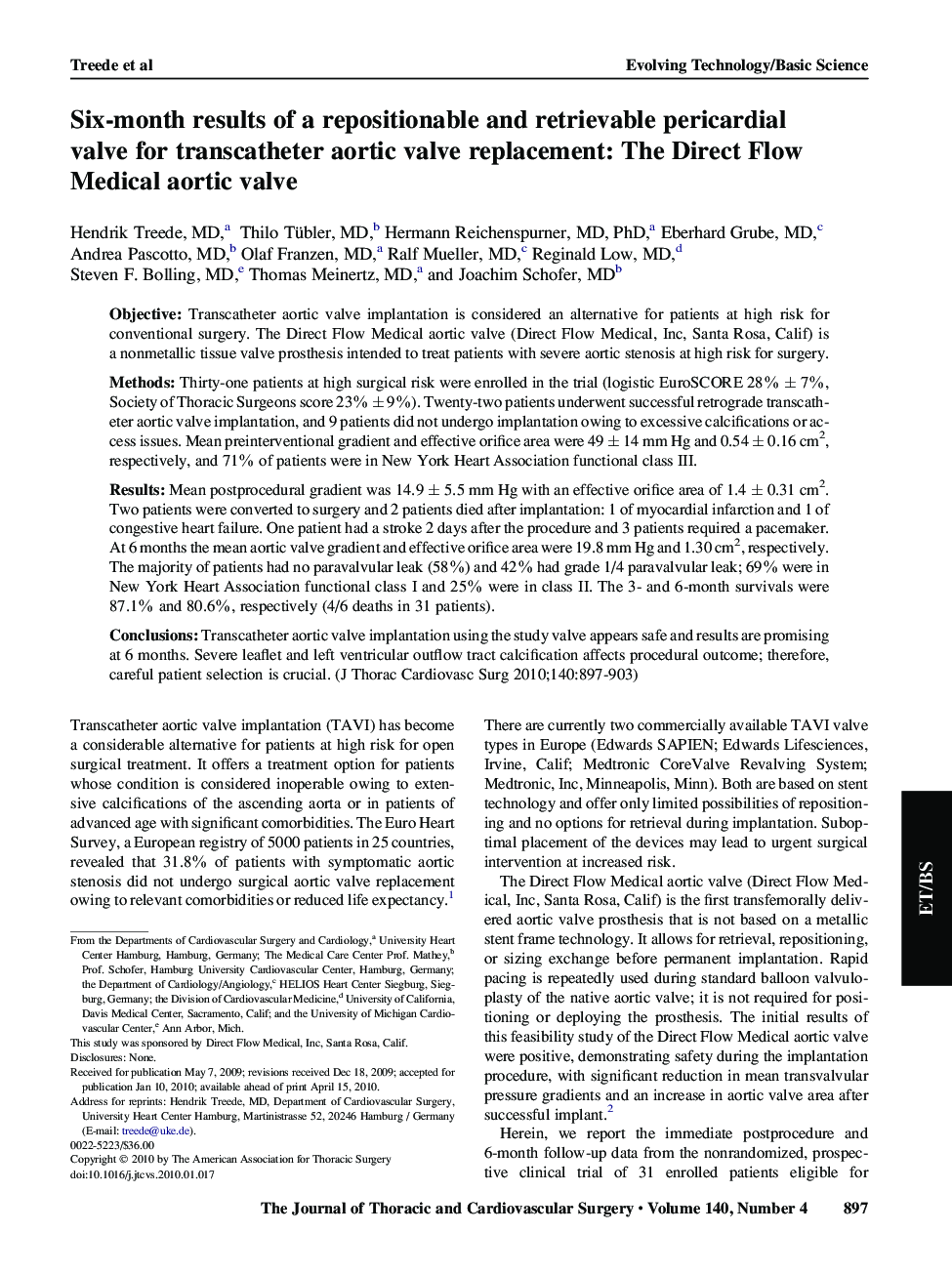| کد مقاله | کد نشریه | سال انتشار | مقاله انگلیسی | نسخه تمام متن |
|---|---|---|---|---|
| 2981939 | 1578657 | 2010 | 7 صفحه PDF | دانلود رایگان |

ObjectiveTranscatheter aortic valve implantation is considered an alternative for patients at high risk for conventional surgery. The Direct Flow Medical aortic valve (Direct Flow Medical, Inc, Santa Rosa, Calif) is a nonmetallic tissue valve prosthesis intended to treat patients with severe aortic stenosis at high risk for surgery.MethodsThirty-one patients at high surgical risk were enrolled in the trial (logistic EuroSCORE 28% ± 7%, Society of Thoracic Surgeons score 23% ± 9%). Twenty-two patients underwent successful retrograde transcatheter aortic valve implantation, and 9 patients did not undergo implantation owing to excessive calcifications or access issues. Mean preinterventional gradient and effective orifice area were 49 ± 14 mm Hg and 0.54 ± 0.16 cm2, respectively, and 71% of patients were in New York Heart Association functional class III.ResultsMean postprocedural gradient was 14.9 ± 5.5 mm Hg with an effective orifice area of 1.4 ± 0.31 cm2. Two patients were converted to surgery and 2 patients died after implantation: 1 of myocardial infarction and 1 of congestive heart failure. One patient had a stroke 2 days after the procedure and 3 patients required a pacemaker. At 6 months the mean aortic valve gradient and effective orifice area were 19.8 mm Hg and 1.30 cm2, respectively. The majority of patients had no paravalvular leak (58%) and 42% had grade 1/4 paravalvular leak; 69% were in New York Heart Association functional class I and 25% were in class II. The 3- and 6-month survivals were 87.1% and 80.6%, respectively (4/6 deaths in 31 patients).ConclusionsTranscatheter aortic valve implantation using the study valve appears safe and results are promising at 6 months. Severe leaflet and left ventricular outflow tract calcification affects procedural outcome; therefore, careful patient selection is crucial.
Journal: The Journal of Thoracic and Cardiovascular Surgery - Volume 140, Issue 4, October 2010, Pages 897–903